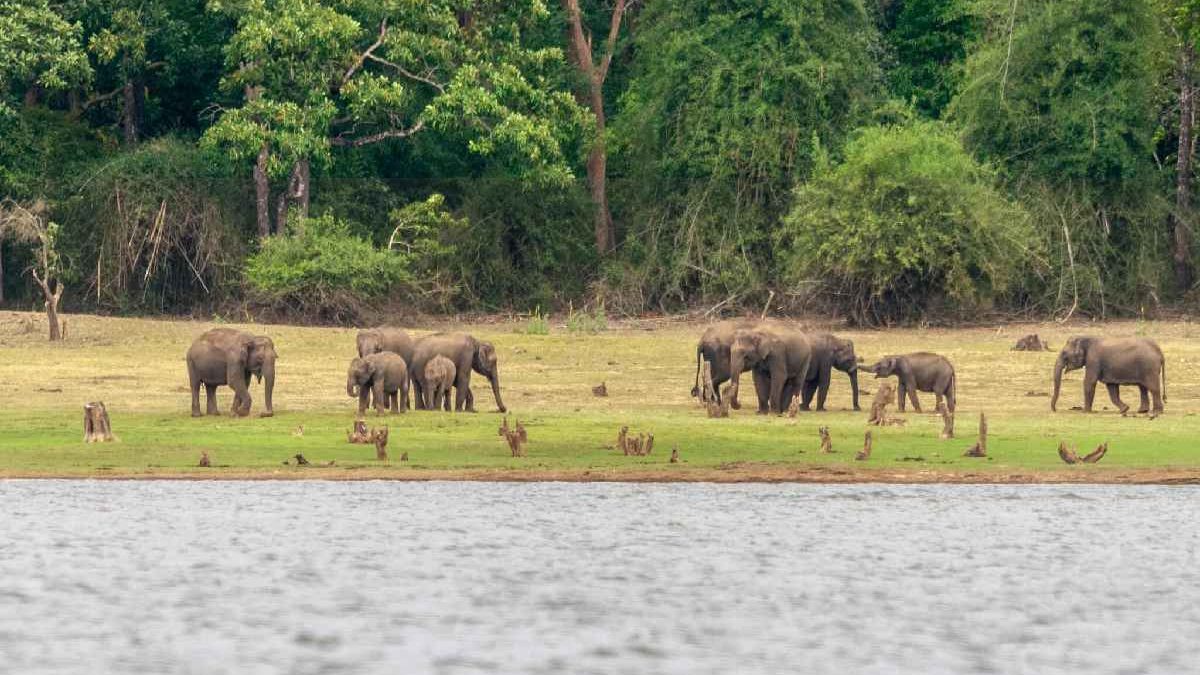National Park Nairobi in Kenya was the first gazetted park in Kenya on December 16, 1946. The park is located approximately 7 km (4.3 mi) south of Nairobi in Kenya and is the only wildlife park in the world so close. Towards the city. This covers an area of 117 km2, by 45 square miles and is located approximately 5,000 to 6,000 feet above sea level.
Nairobi National Park consists partly of thick forests near the outskirts of the town, partly of rolling plains and valleys, and partly of the forested confluence of several rivers; Its vegetation is transitional dry savannah type. Acacia and other thorny varieties, muhuhu, Cape chestnut and Kenyan olive are the most important trees that provide habitat for wildlife in the park. Nairobi National Park is the main rhino sanctuary for breeding and repopulation of other parks, the park is home to over 100 species of mammals and has four of the big five (lions, buffaloes, leopards, rhinos). Other animal species include zebras, black rhinos, giraffes, several species of antelopes and numerous reptiles, among others, present in the park to thrill during Kenya wildlife tours.
The park also experiences a spectacular migration of wildebeest and zebra. Nairobi National Park has more than 500 recorded bird species, of which at least 20 are European seasonal migrants; Some of the bird species in the park include secretary bird, lesser kestrel, martial eagle, hen harrier, sooty hawk, white-bellied bustard great great bustard. crowned crane, corncrake and many others.
Table of Contents
History of Nairobi National Park
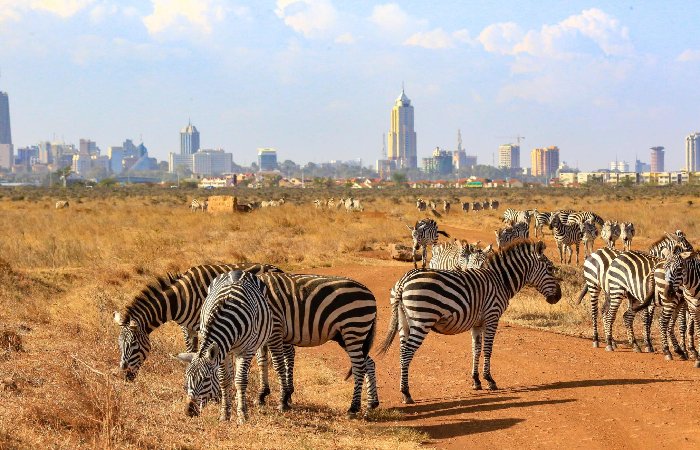
Nairobi National Park is the first park gazetted in Kenya on December 16, 1946. The park is located approximately 7 km (4.3 mi) south of Nairobi in Kenya and is the only wildlife park in the world to be so close to the city. The area of 117 km2, by 45 square miles and is located approximately 1,500 to 1,800 meters above sea level. Nairobi National Park consists partly of thick forests near the outskirts of the city, partly of rolling plains and valleys, and partly of the forested confluence of several rivers; Its vegetation is transitional dry savannah type.
Nairobi National Park has the Nairobi Animal Orphanage, founded in 1963 which is located inside the park and serves treatment and rehabilitation centre for wild animals like lions, cheetahs, hyenas, jackals, servals and among other also bird species can be viewed including parrots, guinea fowls, crowned cranes, ostriches and many others.
“The World’s only Wildlife Capital”
A short distance from Nairobi’s central business district is Nairobi National Park. Vast grassy plains and backdrop of the city scrapes, scattered acacia bushes are home to a wide variety of wildlife including black rhino, lion, leopard, cheetah, hyena, buffalo, giraffes and various endangered birds with over 400 species recorded. Visitors can enjoy the park’s picnic areas, three campgrounds, and hiking trails.
Main Features of Visit National Park Nairobi
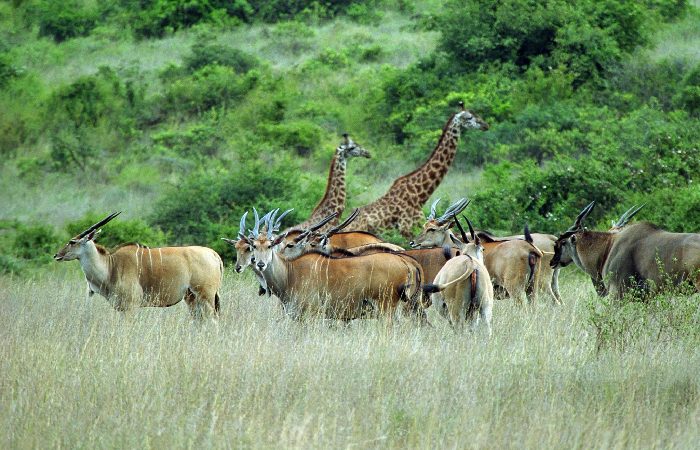
Wildlife
Animals include buffalo, giraffe, lion, leopard, baboon, zebra, wildebeest and cheetah – 100 species of mammals.
400 migratory and endemic bird species.
Picnic Facilities
For corporate events, bush dinners, weddings, picnics, team building sessions, video and film production
Mokoyiet,
King Fisher
historic ivory burning site
Impala
Protected Area Type
National Park
Park Size
117 sq. Km
Climate
Nairobi has a cool and temperate climate. Temperatures are practically consistent throughout the year and it cools considerably at night. It rains very little during the dry season between June and October. From November to May, the rainy season, there are two rainy periods. “short rains” are most intense in November and the “long rains” peak in April.
January-March is hot and dry, April-June is hot and wet, and July-October is very warm and wet.
When to go
All year round
What to take with you
Drinking water, picnic items.
Also useful are: binoculars, a camera, a hat, sunscreen, sunglasses and a guidebook
Attractions In Nairobi National Park
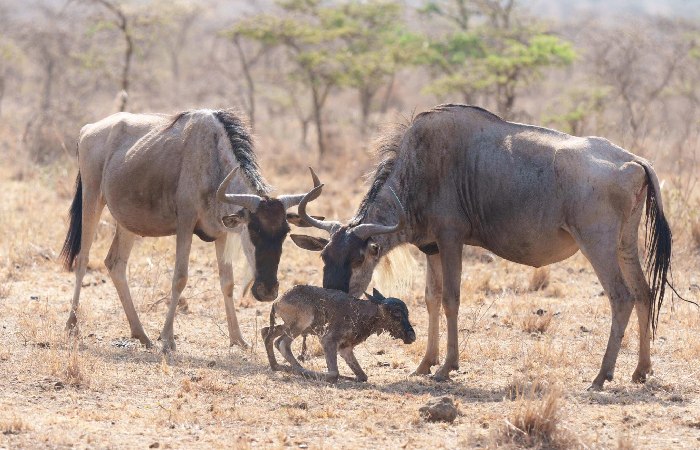
Wildlife
Nairobi National Park boasts 100 species of mammals, including 39 lions, 90 rhinos, 40 different amphibians and reptiles. The park has only four of the big five namely (buffalos, lions, leopards, and rhinos) minus elephants. Nairobi National Park has a spectacular wildebeest and zebra migration, the large predators in the park include the lion, leopard, hyena and cheetah. Other animal species in the park include giraffe, hippopotamus, blue wildebeest, plain zebra, Thomson’s gazelle, common eland, impala, hartebeest, Grant’s gazelle, waterbuck, common warthog, olive baboon, black-backed jackal etc. n Nairobi National Park is the only one in the world to be home to wildlife animals being part of a capital city, but Nairobi is one of the fastest increasing metropolises in Africa, increasingly endangering the park in its midst.
Bird Species
Nairobi National Park is a haven for birding safaris in Kenya, where the park has over 500 recorded bird species, 20 of which are seasonal European migrants. Nairobi National Park, probably the capital of Kenya, has the longest list of birds of any city in the world and is the best birding tour ever. The park’s large area of intact grassland is of great importance to species such as the restricted-range Jackson’s Widow, which regularly breeds thereafter good rains; other grassland birds such as ostriches, secretaries and bustards. Many bird species in Nairobi National Park include the Abyssinian thrush, corncrake, Fischer’s lovebirds, grey crowned crane, Hartlaub’s bustard, Jackson’s widow’s bustard, kori bustard, lesser kestrel, martial eagle, hen harrier, great bustard, white-headed bustard vulture and many others. From November to April, immigrants from Europe and North Africa are present, and from March to May, Jackson’s widow’s spectacular exhibits are present.
Vegetation
Nairobi National Park has large areas of open plains with scattered acacia bushes, It is very dry on the western side of the park and in the south there is a riparian forest and a permanent river. The vegetation is of the open panoramic savannah type of dry transition, which allows several animal species to be observed and observed, here again the acacias and other thorny varieties, the muhuhu, the Cape chestnut and the Kenyan olive tree are the the most important trees which constitute the main habitat of the park.
Nairobi Animal Orphanage
Nairobi Animal Orphanage is found inside Nairobi National Park which is another big attraction in the park that travellers can do and visit while in the park. The Nairobi Animal Orphanage is a treatment and rehabilitation center for wild animals like cheetahs, lions, monkeys, and others once they are hurt say by poachers. The Nairobi Animal Orphanage is a great place to see wildlife upfront, unlike when on a game drive.
Walking trails at hippo pools
Walking trails in Nairobi National Park start from a picnic area, following the Athi river banks. The route is patrolled by the Kenya Wildlife Service rangers and is one of a few areas in the Nairobi National Park where hiking is allowed without one.
It is a major attraction for visitors to Nairobi and also serves many residents, as well as a successful rhino sanctuary. The park has an excellent record for supporting nature to the species and nurturing them until they are relocated to their earlier range and other upcoming sanctuaries. Nairobi National Park has aggregations of large herbivores, buffalo, zebra, and Wildebeest Ivory Burning Site Monument Walking trails at hippo poos Nairobi Safari Walk and the Orphanage. Spacious accommodating picnic.
Best time to visit Nairobi National Park
The best time to visit the park is during the dry months, from July to October, and also January and February. July has the lowest rainfall among all the months of the year. Sideways with July, August is the driest month in Nairobi.
The Wildlife viewing is best during the dry season (when animals can be easily seen around water sources), from June to September, although it is possible to visit Nairobi National Park at any time. Wildlife viewing is often more difficult during long rains (March to May) and short rains (October to November). During these months, rain can restrict game drives and the grass tends to be very tall.
How to get to Nairobi National Park?
This Park is located in Nairobi, the capital Nairobi, 7 kilometres south of the city centre and is accessible through many gates such as Maasai Gate, Mbagathi Gate, Lasngata Gate, Banda Gate and Headquarters of the KWS. To reach Nairobi National Park, use road and air transport.
By Road: By road, it is located approximately 7 kilometres south of the city centre and approximately 10 kilometres from the Jomo Kenyatta International Airport.
By Air: The international tourists fly to Jomo Kenyatta International Airport and the tourists on a mutual safari can use a domestic charter flight to Wilson Airport and then travel to the park.
Accommodations in Nairobi National Park
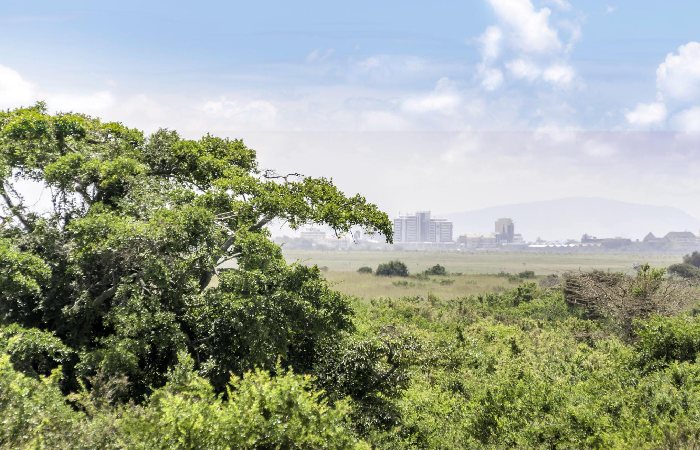
Nairobi National Park Accommodation offers a wide range of safari lodges, hotels and safari camps categorized into luxury lodges, mid-range lodges and budget lodges. The park has three public campsites. All have electricity, and hot water in the showers and in the kitchens. You can rent your tent if you don’t already have one.
Nairobi Tented Camp is the only authoring accommodation in Nairobi National Park. It is located to the west of the park and includes nine permanent luxury tents. Meals have been served in the forest, under the stars or in the restaurant tent. The water is hot over a wood fire. It’s a practice you will never forget.
The park is also close to the outskirts of Langata and Karen. Both will offer a wide range of accommodation options, from comfortable guesthouses to five-star hotels.
For nature lovers, Giraffe Manor is recommended. It is located within the grounds of the Giraffe Center in Langata. In addition to 12 large double rooms in colonial style, this formula is very special thanks to the Rothschild giraffes which roam freely around the premises. Staying here will also allow you to easily reach other main attractions in Nairobi.
Where to Camp in Nairobi National Park?
For travellers looking for a camping experience on a Kenya safari in Nairobi National Park, there are 3 public campsites in the park with electricity, hot showers community kitchens and tent rental services at the front door for those who don’t have their tent.
For travellers who want a camping experience beyond pitching their tent, this experience can be at the Nairobi Tented Camp location within the park boundaries on the west side. Nairobi Tented Camp is a luxury camp consisting of 9 luxurious permanent tents with private bathrooms and solar lighting. The camp serves epicure meals in the bush under the stars or in the restaurant tent.

